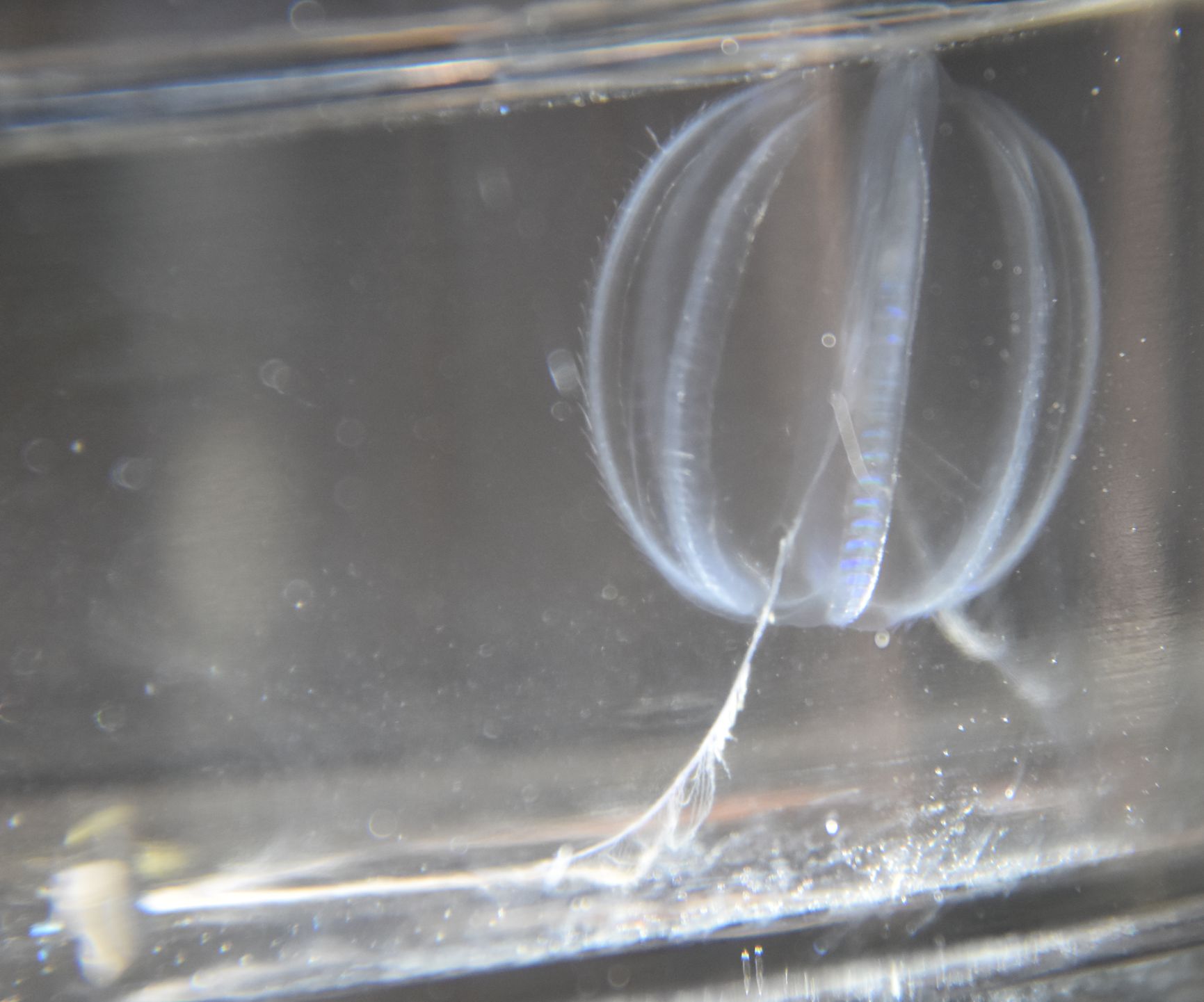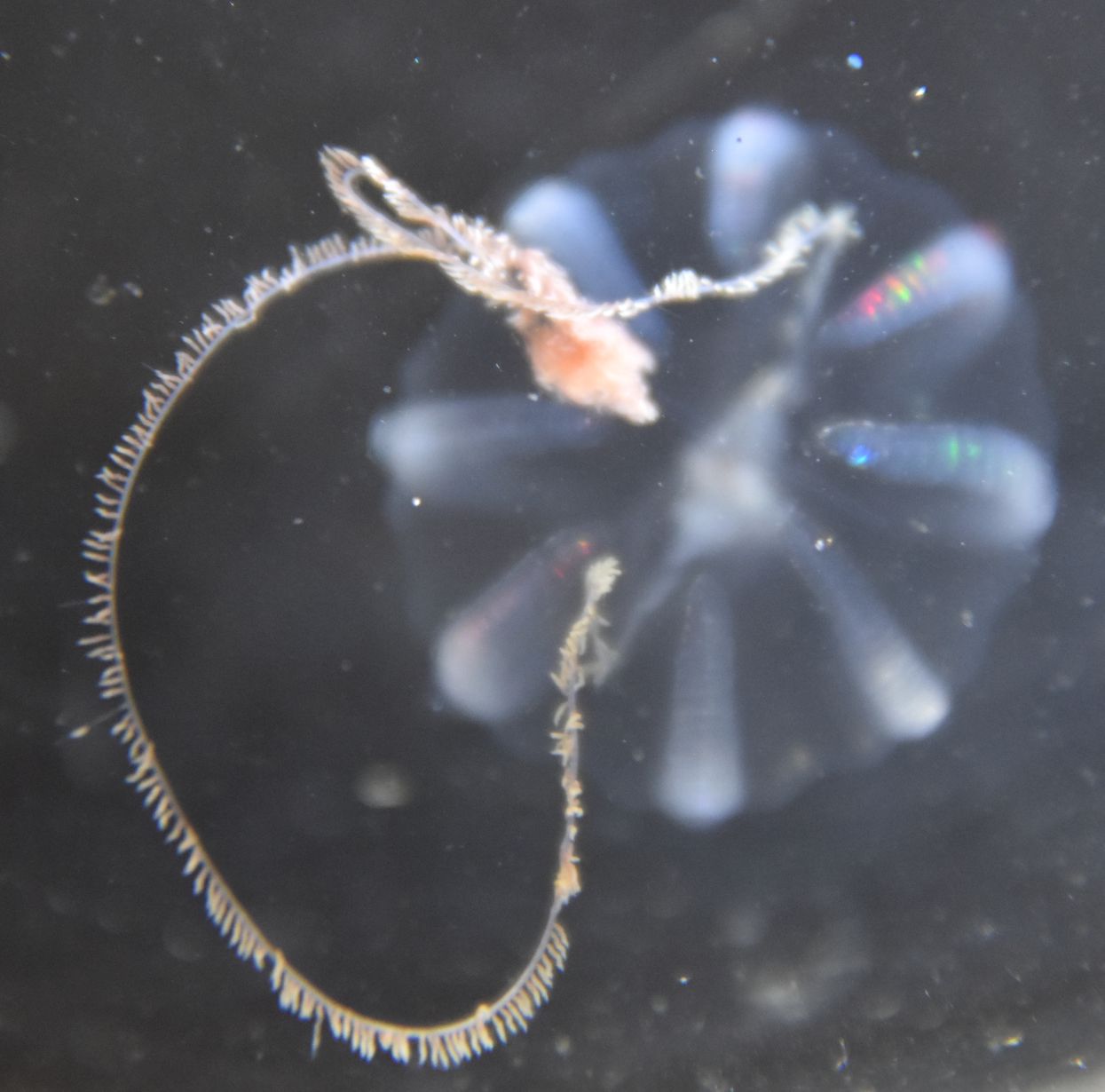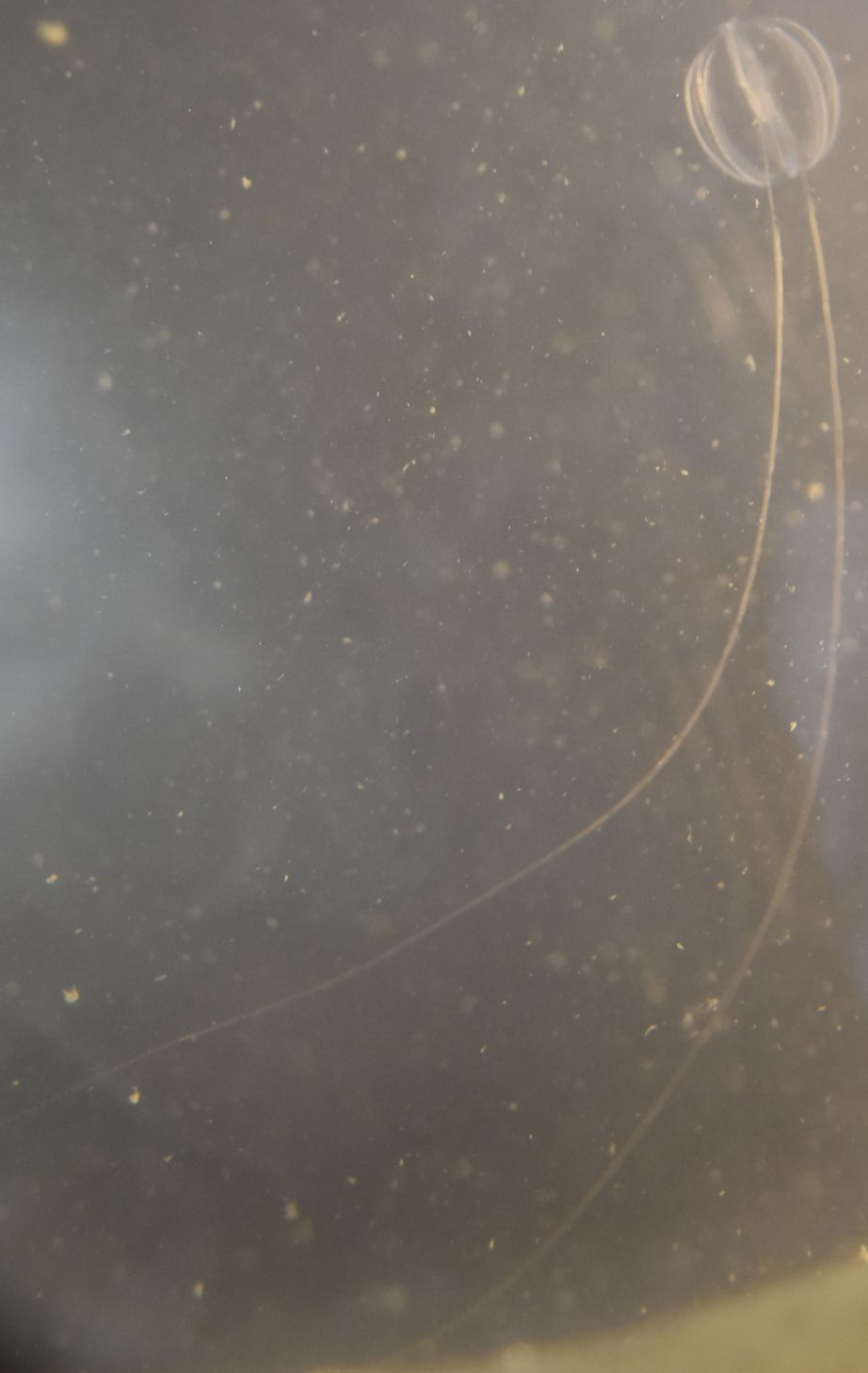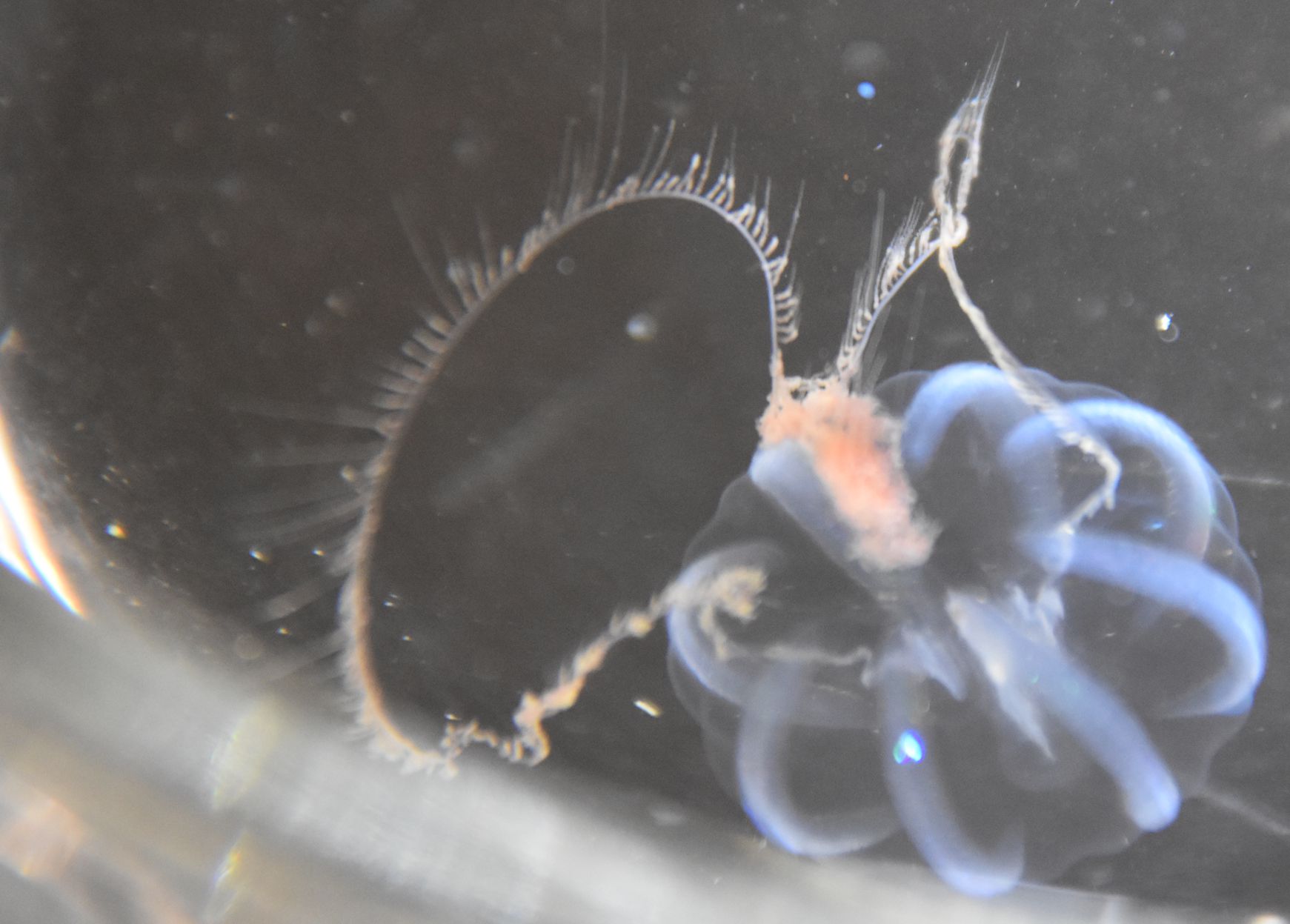Description: As is characteristic for members of Class Tentaculata, this ctenophore has tentacles. The two tentacles are attached very far up on the aboral end and hang down into the water to the sides of the animal, rather than into an internal cavity. The tentacles appeared brick red in this individual when contracted, and have many extensible side branches (tentillae) which, when extended, form a comb-like pattern. The tentacle sheaths are nearly parallel to the stomodeum for some distance. The stomodeum is more than 1/2 the body length. The meridional canals are unbranched. The body is solid and rounded at both ends as with other members of Order Cydippida, but is slightly compressed-somewhat longer than wide. The comb rows start very close to the aboral pole and extend four-fifths of the way to the oral pole or more. When young the oral end is narrowed, but in larger individuals the oral end is slightly wider than the rest of the body. Not bioluminescent. Up to 3 cm long.
How to Distinguish from Similar Species:Hormiphora sp. (undescribed) grows to 3.5 cm length and has branched meridional canals. The tentacle sheaths of Pleurobrachia bachei extend at about 45 degree angles from the stomodeum, and the stomodeum is less than half the body length.
Note: This species appears in Carlton's key to
California marine life
(Carlton, 2007) but not in Kozloff's key. It is very similar in features to Pleurobrachia
bachei. It was found and tentatively identified by Jamie
Fields,
who is an excellent observer of plankton. After examination myself, I
agree
with him
Geographical Range: Known off California and from Friday Harbor
Depth Range: Pelagic
Habitat: Pelagic
Biology/Natural
History:
| Return to: | |||
| Main Page | Alphabetic Index | Systematic Index | Glossary |
References:
Dichotomous Keys:Not in Kozloff, 1987, 1996
Carlton, 2007
General References:
Wrobel
and Mills 1998, 2003
Scientific Articles:
Web sites:
General Notes and Observations: Locations, abundances, unusual behaviors:

This species has long ctene
rows, which extend from near the aboral
end (at the bottom in this photo) to nearly the oral end (top in this
photo)

The brick-red tentacles
have short, comb-like side branches (tentillae).
They can be held short, as above, or extended out, as below. Photos by
Dave Cowles, July 2025.
Authors and Editors
of Page:
Dave Cowles (2024): Created original page
CSS coding for page developed by Jonathan Cowles
Salish Sea Invertebrates web site provided courtesy of Walla
Walla University

